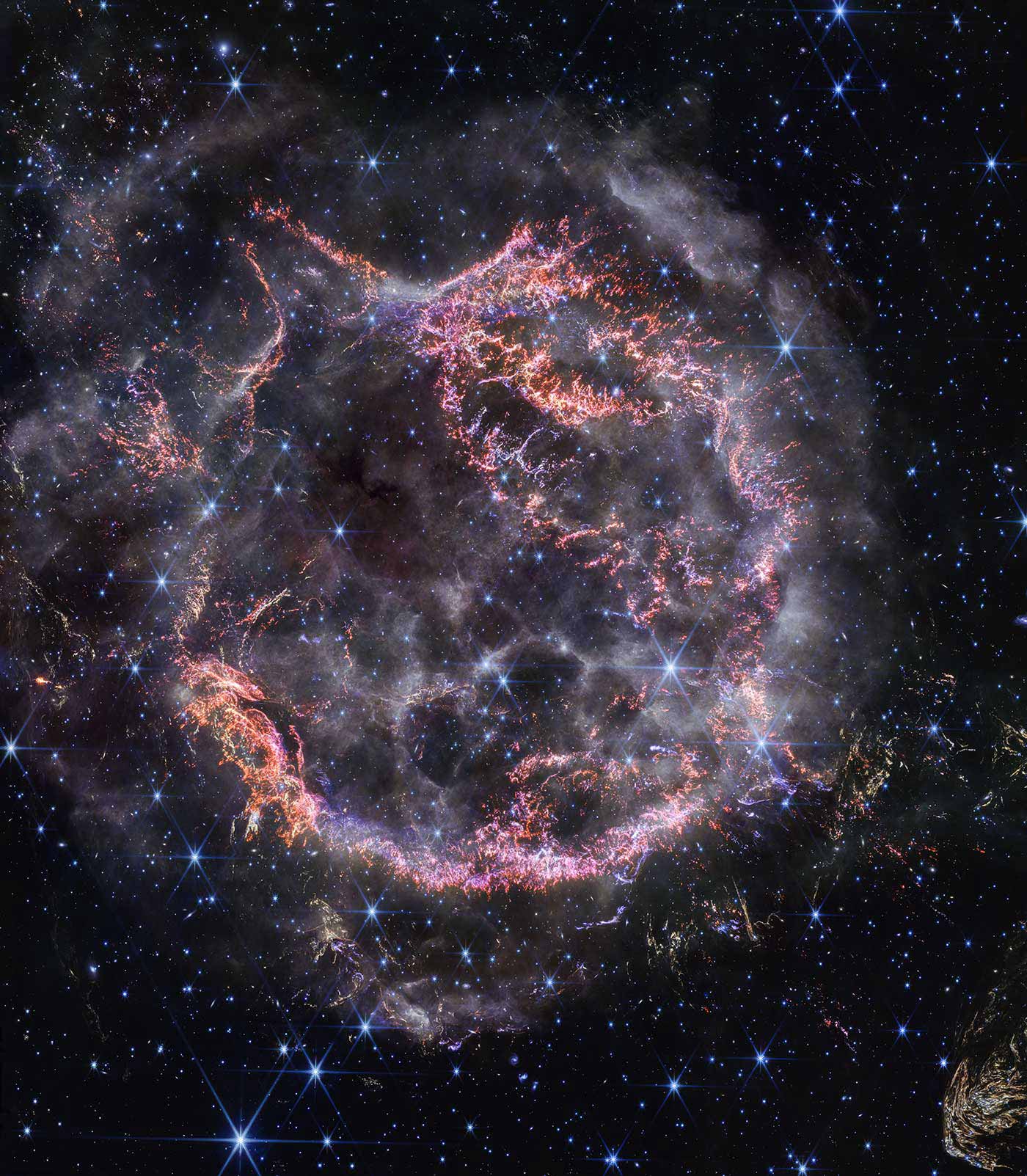2023: A Strange, Tumultuous Year in Sustainability
The year 2023 contained several important sustainability narratives and trends. The author outlines three key ones — the anti-ESG movement, China’s acceleration of a clean economy, and the rise of reporting regulations — and then suggests a series countervailing forces pushing against each. He also outlines several smaller stories that leaders need on their radar as well.

This was a rough year. The world’s biggest challenges generally got worse, or at least more complicated. Our biggest existential threat, climate change, is no longer a scientific model of the future; it’s now a relentless daily challenge. This year, yet again, heat records were shattered, wildfires and dangerous air spread over unprecedented areas, and flooding and storms destroyedthousands of lives. Even the (seemingly) world’s most powerful woman, Taylor Swift, had to postpone a concert in Brazil because of the heat. Scientists tell us that we’ve pushed the planet beyond its ability to support us in critical areas such as availability of water, biodiversity, and, of course, carbon emissions.
The good news is that even though we’re not moving fast enough, sustainability in business is mainstream — a must-do, not a nice-to-do. With both significant bad and good news, I’m frequently asked if I’m optimistic or pessimistic. I can’t answer that easily. The forces driving companies toward sustainability are relentless … yet we’re not doing enough and some powerful counter-pressures are in play. I see duality. As a society, we are winning (more companies doing more than ever) and losing (emissions and inequality still rising). As the clean economy grows, or human rights and equality get more attention, those who do not want these changes also work to slow progress. So, my core takeaway from the year is that there’s a yin-yang of interconnected, opposing forces.
So, let’s look at three themes in sustainability from 2023 that really dwarf other stories. One side of the tug-of-war generally has an advantage — and it leans toward more sustainability and more clean tech — but none of these trends were unobstructed.
1. The Anti-ESG Movement Plagues Companies
This was the biggest topic in sustainable business by far, even as we struggled to clearly define “ESG.” To me, ESG — which stands for environmental, social, and governance — is mostly a term used by the financial world to look at the risk to companies from environmental and social issues. It’s not the broader idea of sustainability, which covers the role of business in society and its contribution to a thriving world. But the terms got conflated, with ESG opponents using it as “a proxy for opposition to the spread of ‘liberal values,’” as the then-head of sustainability for the financial services firm Morningstar pointed out. Anti-ESG is an American creation, and it has a number of flavors, but I heard discussions of it all over the world.
It’s influence played out in a number of ways. Some companies and brands — like M&Ms, Target, and Bud Light — faced firestorms of protest for actions critics found too “woke,” and took heat for their often awkward responses. Most famously, the governor of Florida kept battling one of the world’s most beloved brands, Disney, over the company’s position on state laws targeting the LGBTQ+ community. CEO Bob Iger hit back, calling the attacks “anti-business” and thencancelled a $1 billion office development.
In response to a significant amount of talk in the media and amongst employees on these issues, many companies decided to go silent, embracing a sustainability word-of-the-year, “green hushing.”
On the other hand…
There’s been a bit of a waning of anti-woke rhetoric on the U.S presidential campaign trail, and the significant amount of noise does not seem to be derailing action. A Bloomberg Intelligence surveyfound that the “trend of increasing focus on ESG by both businesses and investors … appears to remain intact.” The report found that three quarters of executives think the benefits of ESG are worth the increased risk of scrutiny. Around 90% of investors felt ESG was mainstream, part of their fiduciary duty, and helped them make better decisions.
Some in the investment community even pushed back on anti-ESG laws — partly because, as one analysis concluded, those state laws could cost taxpayers $708 million. Banks are also making more money from loans and underwriting to clean energy than to fossil fuels. One memorable headline read, “Morgan Stanley Doubles Down on ESG Despite the Politics.”
Other coverage of company action found plenty continuing their work on sustainability, even in states that are hostile to it. For examples, South Carolina steel-maker Nucor is working to make low-carbon steel and set a goal for net zero across value chain by 2050.
The reality is that there wouldn’t be such powerful backlash if there weren’t real progress. On some level, it doesn’t matter too much if companies speak less as long as they continue to do the hard work of decarbonizing and tackling inequality. But it is a concern, as it might make it less likely they will work on the larger, systemic problems we need to solve. It’s hard to collaborate if you don’t talk. The silence should lessen. Some corporate leaders are just changing language — BlackRock CEO Larry Fink says he’ll stop using the “weaponized” term ESG (but the firm kept launching ESG funds).
2. China Leads the World to Clean Economy Tipping Points
The year in clean tech started with the amazing news that the world had spent more than $1 trillion on green tech, which topped investment in fossil fuels for the first time. And the International Energy Agency, which has been underestimating the growth of clean tech for decades, now sees the light, describing an “unstoppable” energy transition. Many regions and countries accelerated their efforts; for example, the EU is banning sales of new internal combustion engine cars by 2035 and calling for a phase-out of fossil fuels. And France banned short-haul domestic flights in favor of trains.
Great news all around. But it was China that blew everyone away. In what may be the single biggest sustainability headline of the year, China’s national oil company, Sinopec, said the country had reached peak gasoline demand (in part by radically increasing sales of EVs). Some analysts believe China may have peaked in total carbon emissions already. The country was on track to add 150 gigawatts of solar this year (versus adding 87 gigawatts in 2022), more than the total capacity in the U.S. And in a rare positive moment in U.S.-China relations, the countries agreed to ramp up renewables. If all the estimates are true, it’s a monumental and fundamental shift in global energy and transportation systems — which has enormous ripples for many gargantuan value chains. And it goes directly against the persistent myth that “China isn’t doing anything” on climate.
On the other hand…
As critics point out, China is permitting more coal plants, but this can get misconstrued. (People say to me that China is building two plants per week when, in reality, many don’t get built.) The new plants are much cleaner, it’s generally backup power, and China is also cancelling and shelving plants rapidly as well.
There are more important countervailing forces, including some indication that exponential growth rates of some techs, like solar, may slow in 2024 due to supply-chain issues. But more pressing is the swing toward conservative leaders globally, which generally correlates with being pro-fossil fuels and actively anti-renewables. For example, Mexico has been making renewables projects much harder and pushing fossil fuels. The UK retreated on some climate policies, like delaying a ban on combustion engines in cars to 2035.
And the global climate summit in Dubai, COP28, included the meeting president (and CEO of the UAE’s national oil company) sounding like a climate denier. Fossil fuel interests now dominate COP, and they’ve inserted into the discussions the language of “abated emissions” — i.e., you can keep burning fossil fuels if you can capture the carbon (a big if). The final language of the COP28 agreement seems to support a fossil fuel phase-out, but we’ll see. We’ve also seen some serious citizen pushback in a number of countries to policies that are perceived to raise the cost of living.
There’s also increasing concern about one aspect of the clean tech transition: There are problematic working conditions in the mining supply chain for clean-economy metals like lithium and cobalt. These are real concerns that should be addressed. The clean tech transition is necessary for our thriving and survival, but we must simultaneously address human rights issues that have plagued all forms of energy. As part of this work, the U.S. and EU are working to secure sourcing under better conditions, as well as sourcing more broadly than from just China.
Finally, I want to note the persistent myth that EVs are “just as bad” as (or worse than) fossil-fuel cars in terms of carbon emissions because of a) the energy needed to make a battery-powered vehicle, and b) the fact that it’s often plugged into a dirty grid. Yes, of course EVs have a footprint, but they are much more efficient users of energy and they are a key part of a systemic solution, including cleaning up the grid. This is a much longer conversation, but the short version is that the footprint of a combustion and oil-based transportation system is wildly higher than a battery and electricity-based one.
3. Rising Requirements and Regulations for Reporting
The biggest tactical discussion about sustainability in business is focused on reporting. It’s wonky and unsexy, but rising regulations covering “non-financial” reporting are creating a lot of work and stress for companies. Most of the attention is focused on the requirements measure and report on carbon emissions — both their own and, increasingly, their suppliers’ and customers’ as well (called “Scope 3” emissions). But these new rules also demand discussion of impacts on water, biodiversity, human rights, and more.
It’s a fundamental shift in what companies have to measure and disclose, and the EU is leading the charge. The European Sustainability Reporting Standards (ESRS) and Corporate Sustainability Reporting Directive (CSRD) create new sustainability reporting obligations for an estimated 50,000 companies. Multinationals, even if headquartered outside the EU, realize they must prepare as well.
But the EU is just one player. In 2023, new laws in Canada and Germany, for example, will require that companies report on the emissions and targets for their supply chains. As a country, California would be the fifth largest economy in the world, so its two climate-related disclosure bills have an enormous impact. One bill, the Climate Corporate Data Accountability Act, requires any company operating in the state (with more than $1 billion in revenue) to disclose their GHG emissions as well as Scope 3 emissions. Almost all of these new bills also hold companies to extensive standards of climate reporting, most notably the guidelines provided by the Task Force on Climate-Related Financial Disclosures (TCFD).
On the other hand…
These are laws, so they’re not exactly optional, but pushback, or at least some nuance, is growing. The alphabet soup of regulations and guidelines is not easy to navigate, so companies are raising important concerns about how, for example, they can gather Scope 3 data from suppliers that may not have it. Also, data and tracking are good things, but it’s possible that extensive reporting is getting in the way of real action by sucking the air out of the room. I’ve seen internal data from consultants that have surveyed sustainability executives on their priorities. In 2022, the top issue was integrating sustainability with strategy, which is what we want to see. Now, the top concern is about how to answer all the new requirements.
The way out of this morass is partly about dedicating enough resources. Companies need more people working on ESG and sustainability reporting. But in parallel, I also hear companies making the case that we shouldn’t seek perfection anyway — after all, precise Scope 3 data is going to be hard to come by (and actually non-existent further up supply chains — picture a small apparel company in China that does not have tracking systems on carbon emissions or human rights). Many aspects of financial statements are estimated today (for example, goodwill on the balance sheet), so some leeway on sustainability data should be expected.
A conservative-led quasi-rebellion against ESG, the continued explosion of clean tech, and the rise of new, detailed sustainability regulations — these are the big three stories of the year in corporate sustainability. Of course, many other things are going on. So, here’s a rapid-fire list of other areas that caught my attention and will likely become much bigger stories in the next year or two.
- Emissions-heavy industries — the so-called “hard to abate” sectors like cement, steel, and aluminum — are starting to turn the ship. Extensive partnerships to develop low/no-carbon manufacturing technologies, growing commitments from buyers to guarantee revenue (like this “green steel” buying network), and new financing approaches (such as the Sustainable Aluminum Finance Framework) are proliferating.
- Company positions on policycontinue to get scrutiny, as there’s a clear disconnect for many between their own big goals and what they, or their trade associations, lobby for.
- Insurance companiesare starting to bail on places hit hard by climate-enhanced weather, like State Farm discontinuing new home insurance policies in California because of wildfires.
- Consumers may finally become a force for sustainability. A fascinating McKinsey study shows that products with ESG claims on packaging experienced faster sales growth.
- Engaging Gen Z stakeholders directly in sustainability and activism (versus leaving them to despair about their future; consider the shocking data on how more than half are not planning to have kids, in part because of climate change) is a rising topic. One cool example: Puma’s “Voices of a Re:Generation” program brought in some young influencers to help guide their sustainability thinking.
- The value of nature — i.e., the many trillions of dollars of services it provides society and business, as well as our very existence — has always been hard to quantify precisely, but efforts continue. In 2023, we saw the development of the Taskforce on Nature-related Financial Disclosures.
- Living wages, a critical element of fighting inequality (especially in supply chains), are unfortunately nearly nonexistent in large companies, according to a Just Capital study (but I remain optimistic that this is shifting).
In total, the tipping points are clear. But countries and companies are not on track to hit net zero targets as fast as science requires. The overall story remains one of a crooked path to inevitable change. A cleaner, more just economy and world is being born, but it’s not going to be smooth sailing. I remind myself that resistance is just a sign that sustainability is winning. Onward to 2024.
Source:- https://hbr.org/2023



































